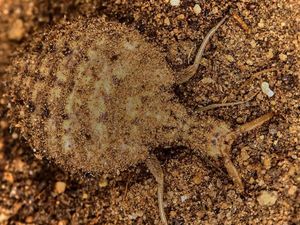Scientists discover deadly secret of antlion traps
‘Spiral digging’ ensures prey have no chance once they stumble into an antlion pit, a study has shown.

Antlions, one of the most nightmarish insect predators, perform a constructional “conjuring trick” to build their deadly pit traps, scientists have discovered.
Laboratory experiments showed how they employ a super-efficient spiral digging technique to separate and remove large sand grains.
The final cone-shaped trap is lined with unstable small grains which immediately give way under the feet of any small creature unfortunate enough to stray into it.
Like something from a horror movie, the antlion lies in wait at the bottom of the trap, ready to grab the prey in hook-like mandibles and drain its bodily fluids.

To study how antlions build their traps, scientists filled tubs with beach sand containing a mixture of large and small grains and filmed the insects – technically insect larvae – at work.
They were surprised by the extraordinary ability of antlions to eliminate the large grains.
Professor Nigel Franks, from the University of Bristol, said: “It is almost like a conjuring trick – many more large grains are ejected than seems possible.
“One answer is that the antlion is ‘interrogating’ much more sand to find and eject large grains than just the volume of sand that has to be removed to form the final pit.”
The team turned to computer simulations to learn more about the way antlions methodically dig in spiral patterns and set off miniature avalanches.

Prof Franks added: “This technique is a superbly efficient time-saving method that literally enables antlions to plough through a large volume of sand, such that the small avalanches they create cause large sand grains differentially to cascade to the bottom of the construction trench, where they can be preferentially ejected during pit construction.”
Lining the pit traps with fine sand grains makes them extremely prone to avalanches, said the researchers, writing in the journal Proceedings of the Royal Society B.
“Any prey item that ventures into the pit will ride an avalanche down to the deadly antlion at the bottom of the pit,” said Prof Franks. “Such pits are an intriguing example of the ever-present force of natural selection that shapes biology.”





